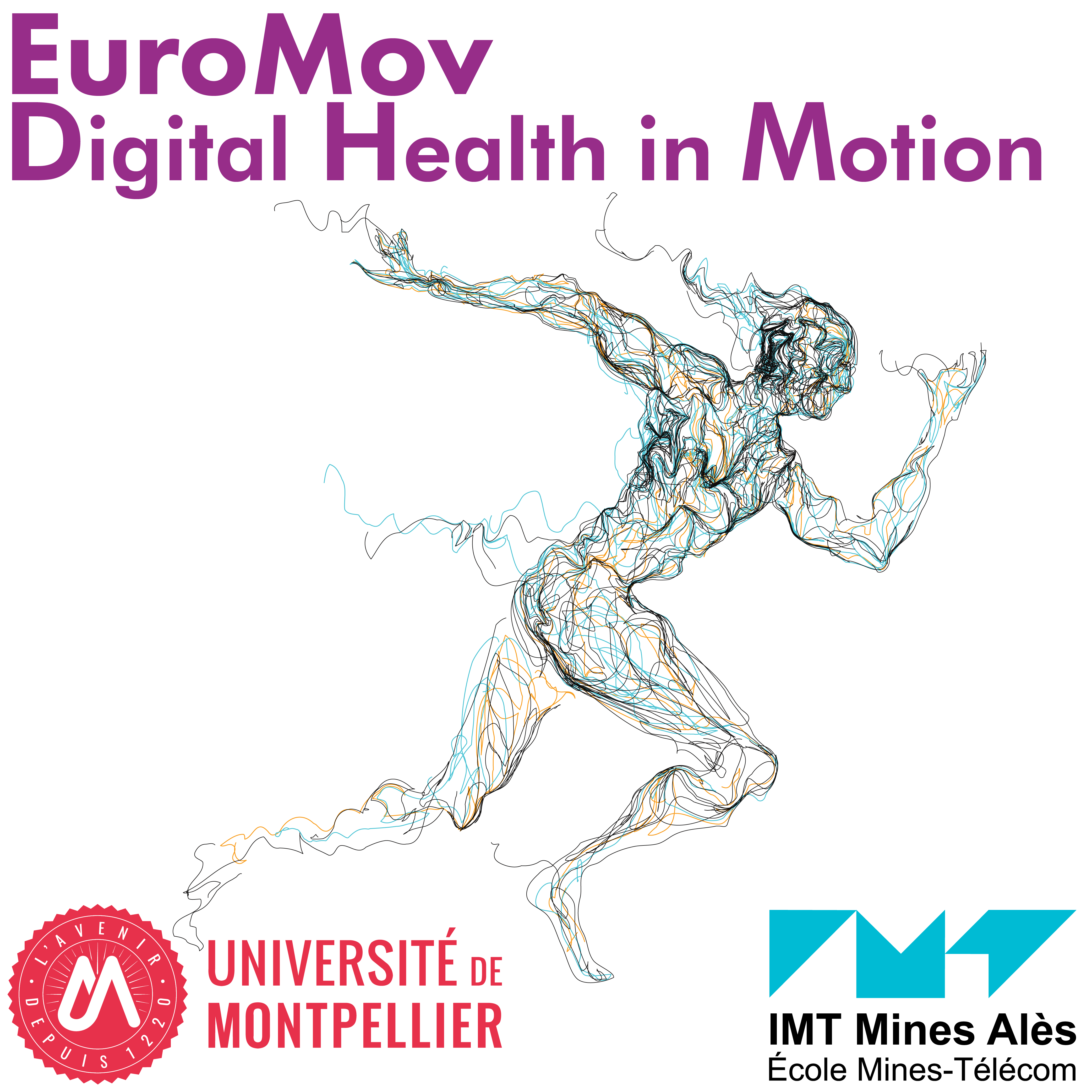EuroMov DHM
Factory
Key words
Models, Methods, Guides – Knowledge – Tools – Prototypes, Demonstrators – Data – Training » standardized, generic, reusable and open.
STRUCTURE
The main objectives of the Biomedical Signal Processing transversal axis of the EuroMov research unit was to (i) provide tools and assistance to solve methodological issues related to the research projects, (ii) validate the methods used to address new problems, (iii) develop new approaches and measures adapted to the scientific questions addressed in the groups. With the creation of the new research unit, new skills in digital sciences can be mobilized to increase the spectrum of methods and tools.
The major reasons for the creation of “The DHM Factory” are the crucial lack of reproducibility of results and standardization of methods/tools used in the unit. Added to this is the weak reuse of materials and codes and a low visibility of the work of our unit. To overcome these issues, we propose to develop a service platform “The DHM Factory” for projects from scientific themes and technological platforms of the unit, but also to incubators and training associated within the research unit.


OBJECTIVES
The Factory is expected to improve the reproducibility of results and accelerate translational research and technology transfer by providing standardized and documented approaches. To promote the research work carried out in the themes, the Factory will encourage the development of rapid methods of development and rapid prototyping. Tools, materials and software in open source will be privileged to ensure their long-term maintenance. Finally, the Factory will setup an open data dissemination strategy.
The main beneficiaries of the Factory’s services will be permanent researchers, doctoral and master’s students. But these services will also be accessible for example to scientific reviewers to evaluate the reproducibility of the results. The governance of the factory will be organized around a steering committee bringing together the head of the axis (G. Dray), the themes leaders and the engineers of the research unit.
From manufactory to factory.
To initiate the services offered by the Factory, four main directions will be privileged at the start of the next period of the joint research unit. How to define taxonomies of movement with maximal predictive power and generalizability?
1 – Data and Signal Processing
For each research projects several types of data are recorded and analysed. These data include kinematic or dynamic human movement data signals (e.g., posture, locomotion, bimanual and interpersonal coordination), images and video, as well as neurophysiological signals (e.g., EEG, EMG, NIRS). The main objectives of the Data and Signal Processing sub-axis are: to provide tools and assistance to solve methodological issues related to the research themes, to validate the methods used to address new problems and to develop new approaches and measures adapted to the scientific questions addressed. A strong skill on image processing will be brought by the ONIVOA platform (https://www.mines-ales.fr/sites/mines-ales.fr/files/u492/onivoa-english.pdf), the basic rules and best practices regarding image acquisition and processing may be defined: optical, physical and perceptual characterization of each elements of any image acquisition and processing chain (sensors, lighting, boards, connections, displays) – adequacy of hardware and software architecture in regards with the expected results – assessment of metrological quality
2 – Software Engineering
The main objectives of the Biomedical Signal Processing transversal axis of the EuroMov research unit was to (i) provide tools and assistance to solve methodological issues related to the research projects, (ii) validate the methods used to address new problems, (iii) develop new approaches and measures adapted to the scientific questions addressed in the groups. With the creation of the new research unit, new skills in digital sciences can be mobilized to increase the spectrum of methods and tools.
3 – Machine Learning & Data Sciences
Machine Learning and Data Sciences are cornerstones of numerous theoretical and practical works performed in the research unit. This sub-axis aims at federating researchers and engineers interested by those domains by promoting: Open-source software libraries and tools, among which those developed by the unit – from widely used general Machine Learning and Data sciences frameworks (e.g. PyTorch, Tensorflow, Scikit-learn, R) to highly specific published source codes – Datasets related to specific problems. Ensure dataset quality and reusability. Share best practices for data acquisition, and ease data access. – Model sharing. Finding and training good models can be both time consuming and costly (economically and ecologically). To ease the use of models we propose to share pre-trained models that can be used to tackle specific tasks [7]. – Teachings; disseminating state-of-the-art updates, best practices, shared experiences, and by offering introductory and technical tutorial sessions in those domains.
4 – Tools and Resources
This sub-axis will provide members of the unit with a set of standardized tools and resources for speed up integration and test. We will recommend to go with established standard for scientific workflows. We are particularly thinking of the Galaxy Project, the de-facto standard for data analytics in biomedical experiments. It resonates well with the overall architecture envisioned for the DHM Factory and has the added advantage of being carried by a large and vibrant community. This includes an extensive programme aimed at producing open and reusable training material. Along with Galaxy, also comes the generalized use of docker containers to deploy and implement workflow in the galaxy framework, which would offer very interesting flexibility.
